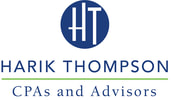|
A SEP IRA offers employers and their employees a tax-friendly way to save for retirement. As it currently stands, with a traditional IRA you can contribute $6,500. This is a decent amount of money. However, with a SEP IRA you can place nearly 10 times that amount in your account during the current tax year. That's upward of $66,000 per SEP IRA. At the same time, keep in mind that SEP IRA annual contribution limits can't exceed the lesser of these two conditions:
The first limitation states that your annual SEP IRA contribution cannot exceed 25% of your total compensation. This is equivalent to the limit regarding how much money you can contribute for each of your eligible employees. This year, the amount of compensation that you can use to calculate the 25% limit is $330,000. Also, there's no catch-up contribution at the age of 50 or older for SEP IRA contributions like there is for traditional IRA contributions. SEP IRAs are generally best for people who are self-employed. This type of IRA is ideal for small-business owners who have few if any employees. If you have employees whom the IRS considers eligible participants in your plan, then you have to contribute on their behalf. Plus, the contributions you make for them must be an equal percentage of compensation compared to your own. What makes someone an eligible participant in a SEP IRA? Eligible participants are people who are 21 years of age or older. They must have worked for your business for at least three of the past five years. While working for you, it is required that they also make a minimum of $750 this year alone. For example, if an employee who worked for you in 2019, 2020 and 2021 made $850 over those three years, you would need to contribute to an SEP IRA for them this year. How are SEP IRAs managed? Employees own and control their own SEP IRAs. That said, a SEP IRA is easy to set up and administer, so it can be combined with a traditional IRA or a Roth IRA. Even better, a SEP IRA is very flexible because you don't have to commit to making contributions year after year. If you're a sole proprietor, you can deduct contributions that you make to the plan for yourself. You can also deduct the fees of trustees if contributions to the plan do not already cover them. Earnings on the contributions are generally tax-free until you or your employees begin receiving distributions from the plan. How does a SEP IRA work? An SEP IRA follows the same investment, distribution and rollover rules as a traditional IRA, which means employees can receive your contributions to their SEP IRA. They can also make regular and annual contributions to their traditional IRA or Roth IRA simultaneously. One does not negate the other. Also, employer contributions to an employee's SEP IRA won't affect the amount of money that employees can contribute to their own IRA. You can set up your SEP IRA so that you're immediately eligible to participate. After you've established your plan, you can amend it and create more restrictive eligibility requirements. However, you must meet the new eligibility requirements if you want to continue your participation in the plan moving forward. How to set up an SEP IRA To set up or alter the eligibility requirements of your SEP IRA, use FORM 5305-SEP. It is an IRS-approved prototype that is offered by banks, insurance companies and other financial institutions. You can set up an SEP IRA for one year as late as the due date of your business’s income tax return for the year in question. This yearlong period of time includes any applicable extensions. A self-employed person can set up a SEP IRA plan even if the employee chooses to participate in an employer's retirement plan through another job. That said, any partners or members of a limited liability company who are taxed as a partnership cannot maintain separate SEP IRA plans. For retirement plan purposes, those people would be considered employees of the partnership, so things would contradict and become confusing. People who reach the age of 72 after Dec. 31 can delay the reception of their required minimum distribution until April 1 of the year after they turn 73 years old. Your contributions to your employees' SEP IRAs won't be included as part of your gross income. Participants may be able to transfer or roll over certain property from one retirement plan to another. But even so, your contributions to their SEP IRAs are made in cash. Also, since an SEP IRA can't be a Roth IRA, your contributions to an SEP IRA won't affect the amount of money that an employee can contribute to a Roth IRA or a traditional IRA. You have to give your eligible employees a statement each year. On that statement, you must clearly show the number of contributions and the value of each that were deposited into their SEP IRAs. You can use a SEP IRA plan instead of setting up a profit-sharing or money purchase plan with a trust. SEP IRAs can boost the size of your retirement nest egg while doing the same for all your eligible employees. This is due to the higher contribution maximum values and the flexibility of SEP IRAs. The extra perks and overall simplicity make SEP IRAs very desirable for employers looking to offer an employer-sponsored plan. Comments are closed.
|
Newsletter articles are posted every 2 weeks. If you would like to have our e-newsletter delivered directly to your inbox, please sign up. Your information is confidential; you can unsubscribe at any time. Subscribe. Categories
All
|
Proudly powered by Weebly

 RSS Feed
RSS Feed